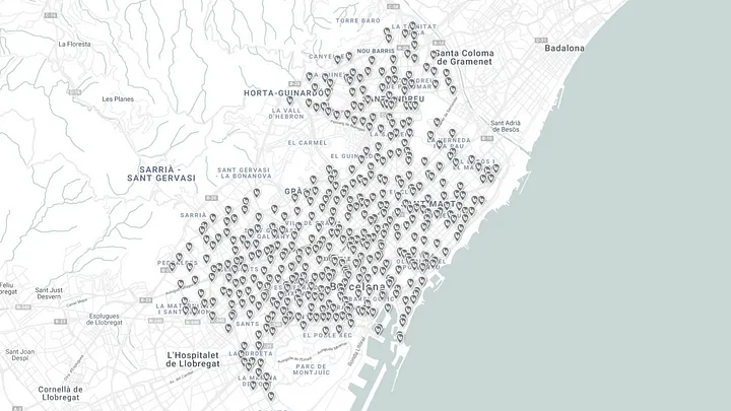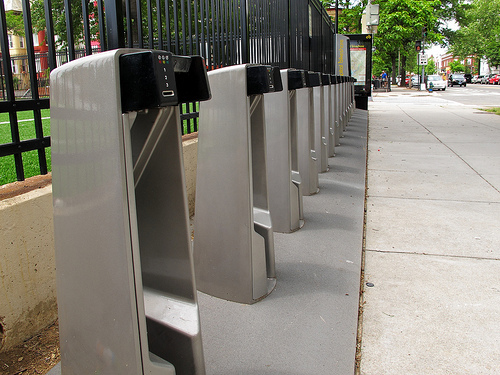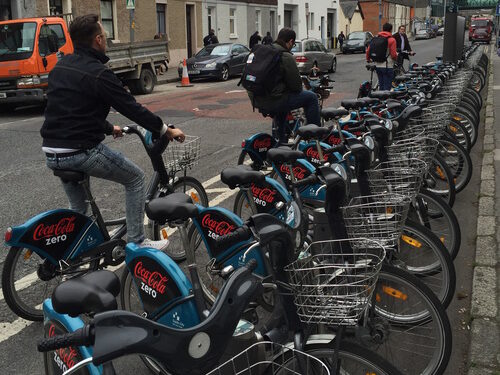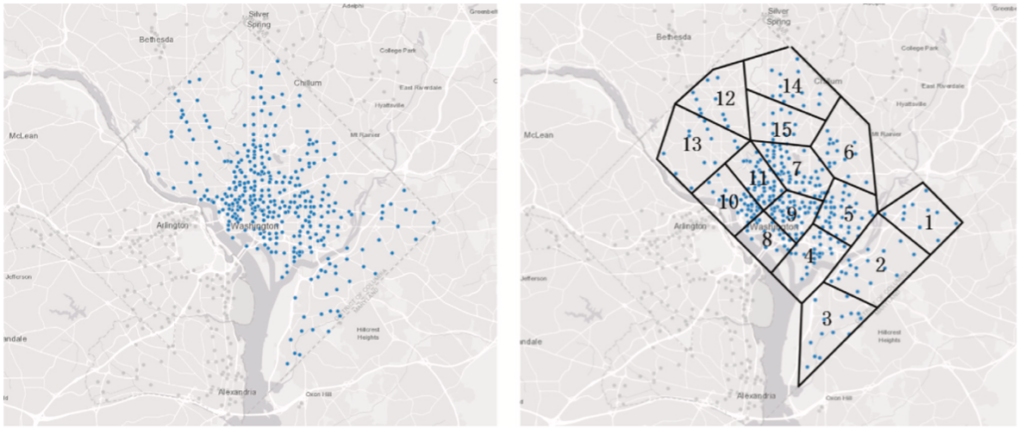Bike-sharing systems (BSS) have emerged as a popular mode of transportation in urban areas, providing a convenient and eco-friendly solution for short-distance travel. Numerous bike sharing programs have been implemented in Singapore, China, France, Spain, the United States, among others. These initiatives have promoted the use of environmentally friendly last-mile transportation, leading to a decrease in traffic jams and a reduction in pollution. Bike-sharing systems have evolved into services primarily accessed through mobile apps, utilizing location tracking technology to enable users to conveniently borrow and return bikes anywhere.
Some of the popular bike sharing systems around the world include:
- Ofo, Meituan Bike in China
- Paris Vélib’ in France
- Anywheel, SG Bike, and HelloRide in Singapore
- Citi Bike, Divvy, and Hubway in the US



Bike-Sharing-Systems Around the World
The success of BSS can be attributed to the convenience it provides to commuters and the flexibility it introduces to the transportation network. Given that the bikes can be picked up and dropped off at any location, this makes this a preferred choice of transport in many markets. However, this increased dependence comes with its own set of challenges. When a commuter is unable to find a bike for their needs, it causes a sense of dissatisfaction. This can, in turn, have a negative impact on the bottom line for the business. Over the years, the competitive marketplace and thin margins has forced numerous BSS operators to shut down operations in various markets. Thus, for survival, the onus is on the BSS operator to improve customer satisfaction while managing the profitability of their operations.


Barcelona’s Bicing Bike-Sharing shut down due to lack of usage
Maintaining the balance in the operations is a delicate task for BSS operators since the demand can vary dramatically across different zones, even within a small region such as a city. Depending on the type of zone (urban, sub-urban or rural), the BSS might have to customize their operation policy according to the different needs. Urban areas, for instance, have a high demand for bikes due to the density of the population and the short distances between destinations. However, managing the supply of bikes can be challenging in this zone due to limited parking spaces, high turnover rates, and the need for frequent maintenance due to heavy usage. Suburban areas, on the other hand, have a more sporadic demand for bikes. This is because the distances between destinations are usually longer, making biking less attractive for some trips. Additionally, the lower population density makes it more difficult to achieve the critical mass of users needed for a successful bike-sharing program. Lastly, in rural areas, the challenges are even more pronounced. The vast distances between destinations and the low population density can make it economically unfeasible to operate a traditional BSS.


Bike stations in different zones of the city can experience differentiated levels of traffic. Source: ggwash
The allocation of bikes to these demand zones involves competing objectives. On one hand, profit maximization implies allocating all supply to high demand zones. This approach ensures that bikes are readily available where they are most needed i.e. urban areas, thereby maximizing usage and revenue. On the other hand, customer satisfaction implies allocating supply with equity across zones. This means ensuring that bikes are distributed fairly across all zones, regardless of demand, to ensure accessibility for all users. In addition, there is uncertainty in the actual demand realization due to factors such as weather, time of day, special events, etc. How can the BSS, in such dynamic environments, determine the optimal distribution of their bikes?

Map of Capital Bikeshare’s bike distribution and zones in Washington DC
It is challenging to identify the proper tradeoff in such multi-objective settings and even more so when the KPI’s are measured in different units. However, these sorts of tradeoffs are common in practice and faced by many organizations in a variety of contexts. A popular way to handle them is by setting targets on certain measures while optimizing their operations. Examples of such measures include, Sustainability, Net Zero Emissions, Racial Equity, Justice Initiative etc. and companies set aggressive targets (Amazon aims to be net zero by 2040, and Apple is investing $100 million in their Racial Equity and Justice Initiative) to guide their actions and help them balance profitability with their sustainability goals.
A similar target driven approach seems promising for the BSS in their quest for equity to manage customer satisfaction. However, the challenge lies in defining the appropriate metric for setting targets and incorporating it into the bike allocation decisions. In a recent paper “A target-based optimization model for bike-sharing systems: From the perspective of service efficiency and equity” by Chen et. al., the authors introduce a “dissatisfaction risk measure” (DRM) that quantifies the frequency and magnitude of user’s dissatisfaction at each zone. While allocation bikes to zones, they ensure equity by minimizing the dissatisfaction in the worst zone, the second worst zone etc. in an iterative fashion (called the lexicographic ordering).

Outcomes of bike allocation based on (i) reducing overall unfulfilled demand; (ii) improving equitable distribution based on satisfaction; (iii) meeting users’ demand and ensuring fairness in service access.
The authors further demonstrate how this idea can be expanded to include demand uncertainties by developing a Distributionally Robust Optimization model. Their approach shows much promise as the results indicate that not only does the allocation improve efficiency (i.e. more bikes are allocated to zones with more demand), but it also has the best equity amongst the other benchmark methods.




